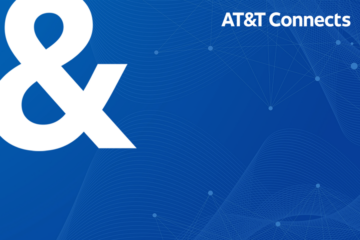As we turn the corner on the pandemic, and drive toward economic recovery, delivering broadband connectivity to every home and every farm, in every city and town, large and small, has become a national priority. Billions of dollars have already been directed to broadband infrastructure and affordability in stimulus legislation, and we anticipate a significant commitment to broadband deployment in the upcoming Biden infrastructure bill. But all of this has raised two – and I think separate – fundamental questions.
First, from a policy perspective, how should “broadband” be defined to determine who is considered unserved? Accurately defining unserved locations is essential to efficiently targeting subsidy dollars to those areas most in need of connectivity, including sparsely populated areas where there are currently no fixed broadband solutions at all. Second, from an allocation perspective, what broadband solutions should be preferred as dollars are allocated?
Let’s turn first to the definitional problem. The pandemic has broadened the consensus opinion that it’s time to revisit the FCC’s current broadband definition of 25/3 Mbps. To be clear, service at that speed is sufficient to support zoom working and remote learning. According to Zoom’s website, a group call using high quality video requires speeds of 1 Mbps up / 600 kbps down.
But we know zooming isn’t the only thing users have been doing during quarantine and most homes now need to support multiple streams. Sandvine reports that video, gaming and social media together consumed 80% of total network capacity during 2020, with Netflix alone accounting for 11% of global traffic. That traffic profile demands significant download performance. For example, Netflix recommends speeds of at least 5Mbps down for HD video streaming, and 25Mbps down to stream in 4K for optimum quality viewing.
When zooming, streaming and tweeting is combined in an average household of four, it’s easy to conclude that download speeds must increase. Notably, the results of the recent FCC Rural Digital Opportunity Fund (RDOF) auction tilted toward players bidding in the 100/20 Mbps or better service tiers, with gigabit bids winning approximately 85% of all locations.
What is less clear is whether we need to increase upload speeds to the same level as download speeds for the purpose of defining “unserved” areas. A definition built on symmetrical speeds could dramatically expand the locations deemed “unserved”, leading to some areas being unnecessarily overbuilt while leaving fewer dollars to support areas in greater need, which tend to be rural.
Turning to the second question, there are stronger arguments that any distribution model should prefer higher-speed services when subsidy dollars are allocated. Fiber is the most “future-proof” approach, but it is commonly accepted that it is not practical to assume fiber can or should serve every household in rural America. Some flexibility must be preserved, particularly for the next generation of fixed wireless technologies likely to be deployed in the recently auctioned C-Band that will easily deliver performance at 100 Mbps down. But wireless networks are not built to deliver symmetrical speeds, so any mandate around symmetrical performance could undermine delivery of these efficient and robust technology solutions in hard to serve areas of the country.
There are additional policy implications in considering both questions. First, there would be significant additional cost to deploy fiber to virtually every home and small business in the country, when at present there is no compelling evidence that those expenditures are justified over the service quality of a 50/10 or 100/20 Mbps product.
Second, as noted above, adopting a symmetrical standard could result in overbuilding existing services today, including existing asymmetrical services that are currently meeting modern connectivity needs. My home internet connection delivers service at 300 Mbps down but only 20 Mbps up, yet it is a service that has supported my household reliably throughout the last year. Overbuilding such solutions would needlessly devalue private investment and waste broadband-directed dollars.
Finally, there is the consumer cost challenge. As we have previously noted, the FCC’s benchmark price for a 100/20 Mbps service is over $100. It’s even higher for a fiber-fed gigabit service. Even the increased Emergency Broadband Fund $50 subsidy will deliver a low-income household less than half of the support it would need to fund such a high-speed service. As higher speed networks get deployed to rural America, the current availability challenge could easily become an affordability one.
While the pandemic has redefined connectivity demands, those demands are not uniform, and the economics of serving every household in the country will require reliance on multiple technology solutions. Policymakers seeking to re-define modern broadband speeds should take into consideration technological capabilities, economic considerations, geographic characteristics and affordability concerns. Getting the definition right is critical to ensuring that broadband dollars are effectively targeted to where they are needed most.
Separate from the definitional result, any competitive bidding framework for allocating dollars can be structured to favor fiber-based solutions where they are available. But the model must be flexible enough to allow for other solutions where deployment of fiber is not economical or geographically practical.
We share the goals of those who want a durable approach to the persistent digital divide. But good policy must be measured against the objective of widely available broadband connectivity with sustainable affordability support for low-income households. If not done correctly, and if dollars are not carefully targeted, the challenges of the digital divide will continue to persist.





